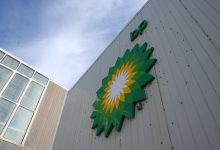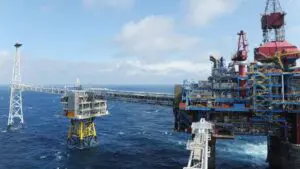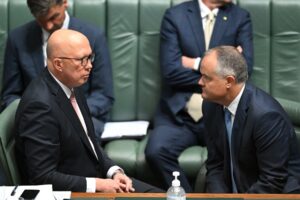British oil and gas supermajor BP has been making significant headway into the renewable and alternative energy space, and this week the company hinted at further such expansion with plans for the short- and long-term to explore moves in to both offshore wind and hydrogen.
In comments made during the company’s third-quarter results call, BP’s CEO, Bernard Looney, offered up some hints of the company’s future direction.
During the call, Looney highlighted many of the renewable projects the company is already involved in around the world. Two major announcements were highlighted, including the July signing of a Memorandum of Understanding (MoU) with leading solar project developer JinkoPower Technology to “provide integrated decarbonized energy solutions and services to customers, further supporting China’s aim of reaching 50% of power generation from non-fossil fuels by 2030.”
Additionally, Looney highlighted a September strategic partnership with American technology giant Microsoft to “develop new technology innovations and digital solutions to help meet their sustainability aims, including reducing energy use and carbon emissions.”
Despite its long history as a major carbon emissions polluter, BP has nevertheless been demonstrating the need for the past to be left in the past, and focusing on the future. In February, the company announced an ambitious plan to “become a net zero company by 2050 or sooner, and to help the world get to net zero.” Since then, BP has been putting its money where its mouth is.
In August, BP announced plans to transition the company into “an integrated energy company” with plans to increase low-carbon investment 10-fold and build out a 50GW renewable generating capacity by 2030.
“BP has been an international oil company for over a century – defined by two core commodities produced by two core businesses,” said Helge Lund, BP’s Chairman, speaking in August.
“Now we are pivoting to become an integrated energy company – from IOC to IEC. From a company driven by the production of resources to one that that’s focused on delivering energy solutions for customers.”
“Energy markets are fundamentally changing, shifting towards low carbon, driven by societal expectations, technology and changes in consumer preferences. And in these transforming markets, bp can compete and create value, based on our skills, experience and relationships,” he said.
“We are confident that the decisions we have taken and the strategy we are setting out today are right for bp, for our shareholders, and for wider society.”
BP announced that it would immediately move to increase its investments in low carbon technologies 10-fold to around $US5 billion per year by 2030, preceded by an 8-fold increase by 2025. The company will seek to build out an integrated portfolio of low carbon technologies such as renewable energy, bioenergy, as well as early positions in hydrogen and CCUS (Carbon Capture, Utilisation, and Storage).
The first hints of this redirection for BP came in the company’s third-quarter earnings call with reporters.
Highlighting the company’s September signing of a strategic partnership with Equinor to enter the US offshore wind market, BP CEO Looney explained that the company will “probably” bid on offshore wind license rounds in the next six months.
According to Looney, Equinor has already submitted bids in the New York second round offshore wind round, in which the state is accepting proposals for up to 2.5GW of offshore wind.
Looney also added that the company has a net pipeline of low-carbon buildout of around 10GW, and options on another 21GW. As such, BP is confident it will be able to hit its target of 20GW low carbon capacity by 2025, as revealed by BP executive vice president Dev Sanyal in September.
In responding to a question about the company’s plans regarding hydrogen, Looney spoke about a recent trip to Germany in which he met with people from German automotive giant Daimler, as well as people in the German government, all of whom are focusing on the important role hydrogen will have for the German economy.
Looney has said that Germany is setting up agreements to become a hydrogen importing country with Australia as well as countries in the Middle East.
As for BP, Looney explained that “hydrogen is a core part of what we believe in for the future” but that hydrogen will emerge as a BP business post-2030 rather than anytime soon.
When it does get around to incorporating hydrogen as a major component of the company’s business, BP will look to be supplying hydrogen to heavy industry and for power, and will incorporate a mixture of green hydrogen, made from renewables, and blue hydrogen, made from natural gas.
However, even though hydrogen is a longer-term goal for BP, Looney explained that the company is already looking at a green hydrogen project in Lingen in Germany which would supply one of the company’s German refineries.
BP also expects hydrogen to be the fuel of choice for heavy duty transport over the medium term, a role it will therefore explore further.
According to Looney, “we believe in hydrogen,” but it’s “not going to be a material part of BP in the next 3 years or 4 years, but it could easily be a material part and I expect it will be in the period 2030 plus” and will incorporate “a mixture of heavy industry and power, as well as heavy duty transport”. Looney also promised more information about its hydrogen ambitions in the coming months, “and certainly as we head into 2021”.







